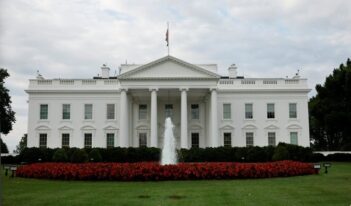
Experts assess the use of VSLs and benefit-cost analysis for pandemic decision-making.
With millions of COVID-19 cases already detected in the United States, and thousands of deaths occurring each week, the nation continues to battle the coronavirus pandemic. Each new wave of cases presents policy questions for federal, state, and local officials. These questions involve vital matters such as when and how children should attend school, businesses should open for customers, and public gatherings should occur. These decisions have tradeoffs—including health risks and economic consequences—that policymakers must consider.
Federal regulators commonly use benefit-cost analysis to assist in making other kinds of risk policy decisions, usually relying on the value of a statistical life (VSL) as a monetized estimate of the benefits of risk management policies. As the VSL usually provides a way to assess which policies are justified, some scholars assert that the VSL, although imperfect, can serve as a foundational tool to guide government decisions in the time of COVID-19. Other scholars, however, suggest that the VSL may be an insufficient or imperfect measure for pandemic-related policies.
In this series of essay, The Regulatory Review features leading experts discussing how policymakers should analyze their options about when and how the United States should close businesses and schools, as well as reopen them and relax social distancing and quarantine requirements. This series brings together the following contributors: Matthew D. Adler of Duke University Law School; Jonathan Masur and Eric Posner of the University of Chicago Law School; Lisa A. Robinson of the Harvard T.H. Chan School of Public Health; and Arden Rowell of the University of Illinois College of Law.
Cost-Benefit Analysis Supports Continuing the National Shutdown
April 20, 2020 | Jonathan Masur and Eric Posner, University of Chicago Law School
What metric can one use to trade off human lives and economic misery? The answer is cost-benefit analysis, the method the government normally uses for making such tradeoffs. And cost-benefit analysis gives a reasonably clear answer: hold off.
Rethinking Benefit-Cost Analysis for COVID-19
August 3, 2020 | Matthew D. Adler, Duke University
VSL is a familiar tool, but it lacks a firm normative foundation. Federal agencies and scholars engaged in policy assessment should shift away from Kaldor-Hicks efficiency and benefit-cost analysis to the social welfare function framework as the core assessment tool.
COVID-19 and Uncertainties in the Value Per Statistical Life
August 5, 2020 | Lisa A. Robinson, Harvard T.H. Chan School of Public Health
Some COVID-19 analyses rely on a population-average VSL estimate, often around $10 million, while others adjust VSL for life expectancy at the age of death. Understanding the underlying concepts and the uncertainty in these estimates is essential to informing policy choices.
Using VSLs in State and Local COVID-19 Policy
August 12, 2020 | Arden Rowell, University of Illinois College of Law
In the COVID-19 pandemic, policymakers at all levels of governance are being asked to trade off lives, health, and money. Federal regulators have been making these types of tradeoffs for many decades and have developed tools that may help decision makers faced with terrible choices. Among these tools, the VSL may be the most portable and most immediately helpful.
COVID VSLs and the Undervaluation of Pandemic Risk
August 17, 2020 | Arden Rowell, University of Illinois College of Law
Although the VSL is a powerful tool for addressing difficult questions, policymakers should be aware of its limitations. In particular, policymakers should recognize that typical VSL calculations were not designed to address mortality or morbidity risks of the type presented by COVID-19. More specifically, the VSL does not address deaths spread through close contagion, and the VSL structure does not even attempt to address non-deadly illnesses.



